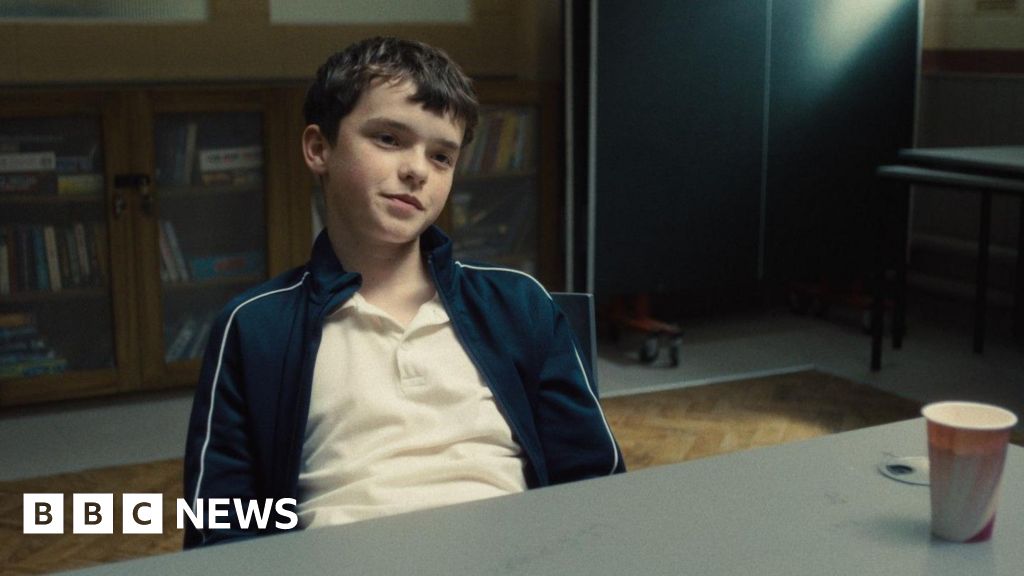Adolescence: Navigating the Hazards of a Digital Youth
Seated amidst family photographs and a well-loved piano, Ben, a 15-year-old boy, flicks through his phone, a snapshot of a common teenage ritual filled with muted connections and fleeting interactions. Yet, these seemingly benign actions hide a storm beneath the surface. In a recent Netflix drama titled Adolescence, we witness a harrowing tale of a 13-year-old boy named Jamie, accused of murder after falling victim to the darker facets of online life. This portrayal raises questions as parents breathe a sigh of relief or panic as they confront an all-too-real crisis wrapped within the fabric of their children’s digital worlds.
A Series Reflecting Hidden Realities
As the credits roll on Adolescence, Ben and his parents—Sophie and Martin—gather in their living room, engaging in a conversation that spills across generational divides. The characters Jamie and his peers often communicate in the toxic language cultivated within online misogyny, a theme that resonates with Ben, even if he initially doesn’t grasp the term “incel.” “People just call each other ‘virgins’,” he states, sensing its drift from online discourse.
Ben’s nonchalant attitude represents a deeper disconnection, yet there’s a desire to understand. Sophie reflects, “It’s really twisted; they don’t know how to behave around each other,” as societal norms evaporate into fragments of tweets and stories. Studies suggest that 72% of adolescents encounter harmful content online daily, making conversations about these influences not merely necessary but urgent. As Sophie emphasizes, “It’s a tsunami and someone’s given me an umbrella,” evoking the overwhelming flood of information that envelops today’s youth.
Cultivating Conversations on Inequity
Both Ben and his father Martin acknowledge the enigmatic presence of influencers like Andrew Tate in their lives; while prevalent a few years ago, he’s now regarded as “old news,” signifying the ever-shifting sands of online culture. Martin astutely observes, “Tate is not the cause; he’s a symptom of a bigger social problem,” initiating a conversation that dives deeper into the nuanced dynamics of male-female relationships.
The Digital Landscape of Gender
The chasm between boys and girls appears widening, encapsulated in Sophie’s concern over Ben’s limited interactions with female peers. She points out, “They’re getting most of their information about how to interact with girls from social media.” In exploring this dynamic, experts have found that almost 65% of boys in single-sex schools report feeling awkward around girls.
- Fostering Healthy Communication: Parents need to start dialogues surrounding consent and respect.
- Creating Mixed Spaces: Encouraging mixed activities can help break down barriers between genders.
- Modeling Empathy: Adults should exemplify healthy relationships to provide adolescents with meaningful templates to emulate.
Ben shares insightful revelations after spending time with his cousin, who attends a mixed-gender school. “Girls and boys can be friends,” he recounts, a lesson in empathy and understanding learned through direct interaction. His realization stands in stark contrast to Jamie, whose relationships are steeped in manipulation and control.
Exploration of Intimacy and Agency
At the crux of Adolescence is an exploration of consent and agency, illustrated by the poignant subplot involving intimate images shared without permission. Ben nods in recognition of ongoing incidents among his peers, illustrating a culture increasingly vulnerable to exploitation. “There’s a guy near here, and [a picture of] his genitals got leaked on a massive group chat; that was a big thing on TikTok,” he recounts, underscoring the urgency of these narratives.
The accessibility of explicit content weighs heavily on young minds. Research indicates that approximately 48% of adolescents have been exposed to pornography between the ages of 11 and 14. Ben grimaces while discussing the ubiquity of online violence. “One in 10 videos I watch contain distressing material,” he admits, revealing the weights they bear while seeking entertainment and validation. Both Martin and Sophie acknowledge their son isn’t “safe” just because he’s out of sight; they touch upon the emotional distance modern technologies create between parents and children.
Addressing the Root of the Issue
In discussing preventative measures, the family converges on a common belief: true change requires collective responsibility. Sophie reflects, “Adolescence shows that children with limited opportunities to build their self-esteem are more vulnerable,” urging a reflection on how social, educational, and familial avenues can intervene.
Through the lens of broadening experiences, the conversation pivots toward the role of male role models. “It’s important,” Ben affirms, as his eyes light up while discussing supportive figures in sports. “They have strong morals, and I admire that.” Yet, Sophie admits, “It’s expensive to expose him to these experiences, which leaves poorer students at a disadvantage.” The family’s dialogue elicits awareness of intersectionality—access and privilege form a backdrop against which these issues play out.
As they navigate the intricacies of sociability and digital despair, the discussion between Ben and his family reveals a profound truth: the ability to communicate openly paves the path for understanding and healing in this intricate maze of adolescence. “It’s like real life—because it is real life,” Ben states firmly, summing up not just his reality, but the digital existence all young adults face today.
Source: www.bbc.com


